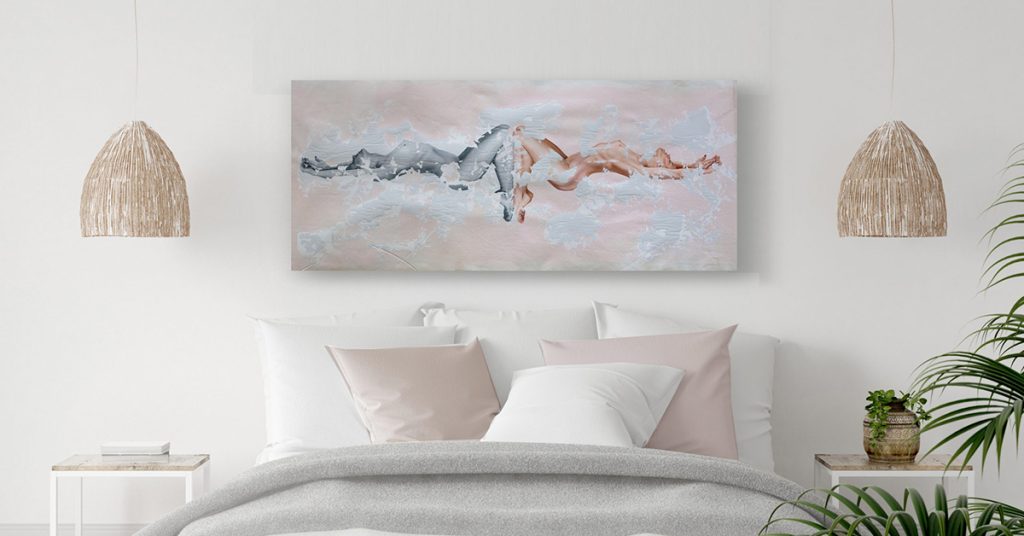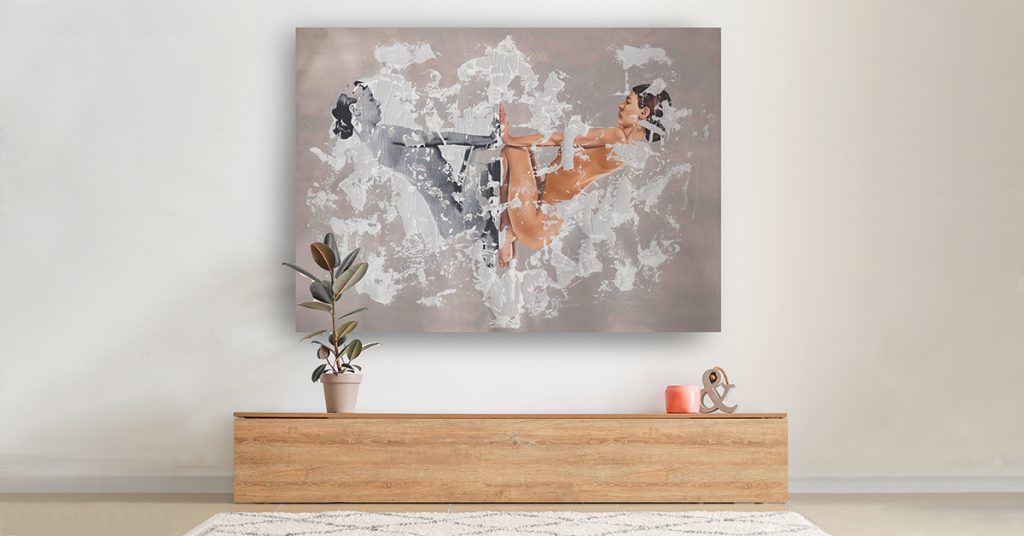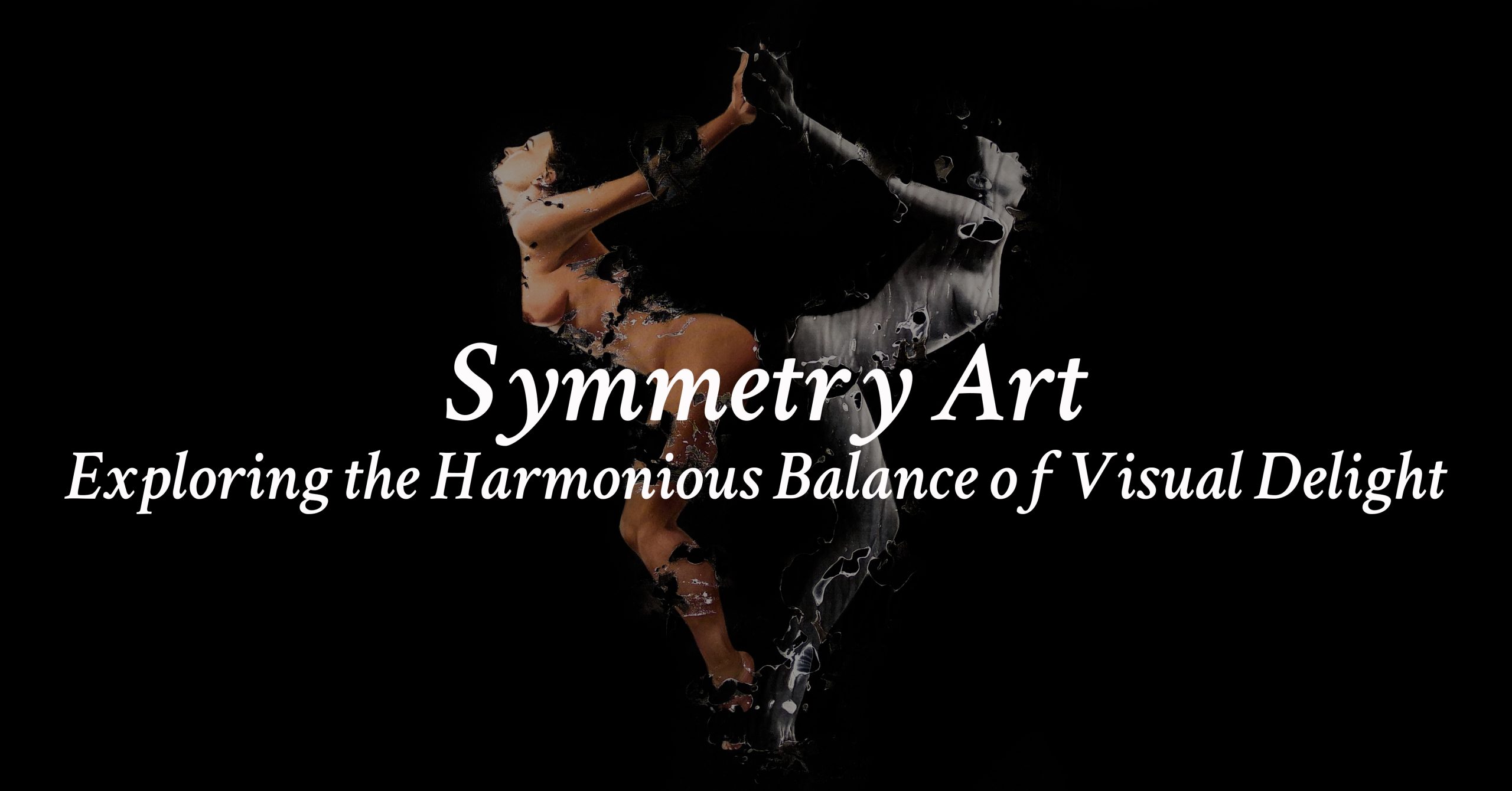
- Introduction
- 1. The Concept of Symmetry Art
- 2. The Origins of Symmetry Art
- 3. Symmetry Techniques in Art
- 4. Symmetry Art in Different Art Forms
- 5. Creating Symmetry Art: Tools and Techniques
- 6. The Impact of Symmetry Art
- 7. Artists Known for Symmetry Art
- 8. Raúl Lara Symmetrical Art
- 9. The Role of Symmetry Art in Contemporary Culture
- Conclusion
- FAQs
Introduction
In the vast world of art, there exists a captivating form that plays with balance, harmony, and aesthetic appeal—Symmetry Art. With its precise reflection and mirror-like qualities, symmetry art has enthralled artists and art enthusiasts throughout history. In this article, we will delve into the intriguing world of symmetry art, exploring its origins, techniques, and the mesmerizing effects it creates. Get ready to embark on a journey that celebrates the beauty of balanced visuals.
1. The Concept of Symmetry Art
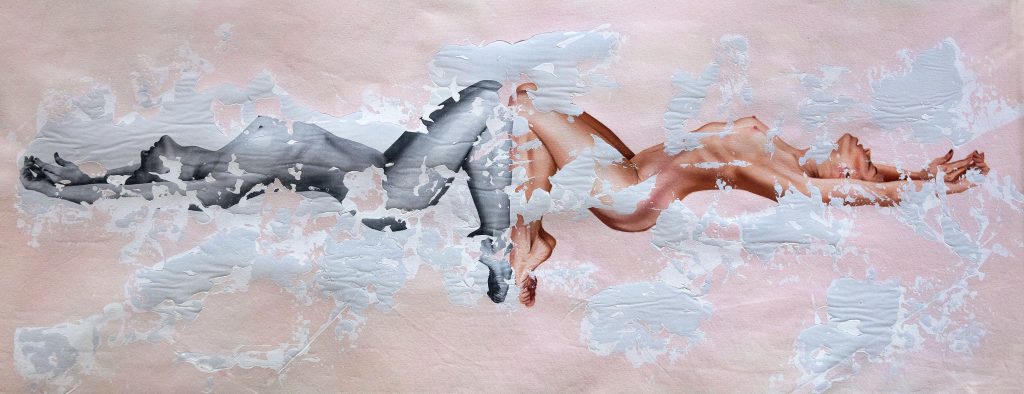

Symmetry art is a form of artistic expression that revolves around the concept of balance and reflection. It is the meticulous arrangement of visual elements in a way that creates perfect or near-perfect mirroring or repetition. At its core, symmetry art embraces the notion that harmonious arrangement can evoke a sense of beauty and captivate the human eye.
1.1 Understanding Symmetry
Symmetry, in its essence, refers to a balanced arrangement of elements or shapes around a central point or axis. It embodies a harmonious relationship between different parts, creating a sense of unity and equilibrium. In symmetry art, this concept is translated into the deliberate creation of mirrored patterns or repeated motifs that enchant and engage the viewer.
1.2 Symmetry in Nature
Nature, with its awe-inspiring wonders, often showcases remarkable examples of symmetry. From the intricate patterns on butterfly wings to the petals of a flower, symmetry can be observed in various forms. The inherent balance and proportion found in natural structures have long inspired artists to recreate these symmetrical wonders on canvas or through other artistic mediums.
In nature, symmetry serves both functional and aesthetic purposes. It aids in the efficient distribution of resources, such as nutrients and light, while also attracting potential mates or pollinators. Moreover, the symmetrical patterns found in nature evoke a sense of tranquility and visual harmony, captivating observers and inspiring artistic interpretations.
Whether it is the delicate wings of a dragonfly or the spiral patterns of a seashell, the presence of symmetry in nature is a testament to its enduring allure. Artists have long drawn inspiration from these symmetrical wonders, translating them into captivating pieces of art that celebrate the inherent balance and beauty found in the natural world.
2. The Origins of Symmetry Art
The roots of symmetry art can be traced back to ancient civilizations, where the concept of balance and symmetry held great significance in artistic expressions. Let’s delve into the historical influences and cultural significance that have shaped this captivating art form.
2.1 Historical Influences
Throughout history, symmetry art has found its place in various artistic traditions across different continents. One notable example is the ancient Egyptian civilization, where the concept of symmetry was integral to their artistic endeavors. The intricate hieroglyphics, monumental architecture, and decorative motifs of ancient Egypt often showcased symmetrical patterns, reflecting their belief in cosmic order and balance.
Similarly, ancient Greek art embraced symmetry as a fundamental principle. The symmetrical arrangement of sculptures, such as the renowned Kouros statues, epitomized the Greeks’ pursuit of ideal beauty and proportion. Their dedication to symmetry extended beyond sculptures and permeated various artistic disciplines, including pottery, architecture, and even city planning.
In the Islamic world, the concept of symmetry art flourished during the Islamic Golden Age. Intricate geometric patterns and symmetrical designs adorned mosques, palaces, and manuscripts. Islamic art’s emphasis on symmetry was not merely an aesthetic choice but also a representation of their spiritual beliefs and the divine order of the universe.
2.2 Cultural Significance
Symmetry art holds cultural significance across diverse societies. In many cultures, symmetrical designs symbolize harmony, balance, and order. The meticulous creation of symmetrical patterns and motifs reflects the desire for equilibrium in both the physical and metaphysical realms.
For example, in Eastern cultures, such as Chinese and Japanese art, symmetry plays a vital role. The balanced compositions in traditional Chinese paintings, the harmonious arrangement of elements in Japanese gardens, and the symmetrical motifs in their decorative arts all embody the pursuit of serenity, balance, and interconnectedness with nature.
Moreover, symmetry art holds religious and spiritual symbolism in many cultures. In Hinduism and Buddhism, mandalas are intricate, symmetrical diagrams used in meditation and spiritual practices. These mandalas represent the cosmic order and serve as a visual aid for achieving inner balance and enlightenment.
By exploring the historical influences and cultural significance of symmetry art, we gain a deeper appreciation for its enduring presence in various artistic traditions. From ancient civilizations to contemporary societies, the allure of symmetry transcends time and cultural boundaries, captivating and inspiring artists and art enthusiasts alike.
3. Symmetry Techniques in Art
Symmetry art encompasses a range of techniques that artists employ to create captivating and balanced compositions. Let’s explore some of the key symmetry techniques utilized in art.
3.1 Reflective Symmetry


Reflective symmetry, also known as bilateral symmetry, is one of the most common and easily recognizable symmetry techniques. It involves dividing an image into two equal halves, with each half mirroring the other. Think of a butterfly’s wings or a perfectly reflected image in a still pond. Reflective symmetry creates a sense of equilibrium and stability, captivating the viewer with its harmonious balance.
3.2 Rotational Symmetry
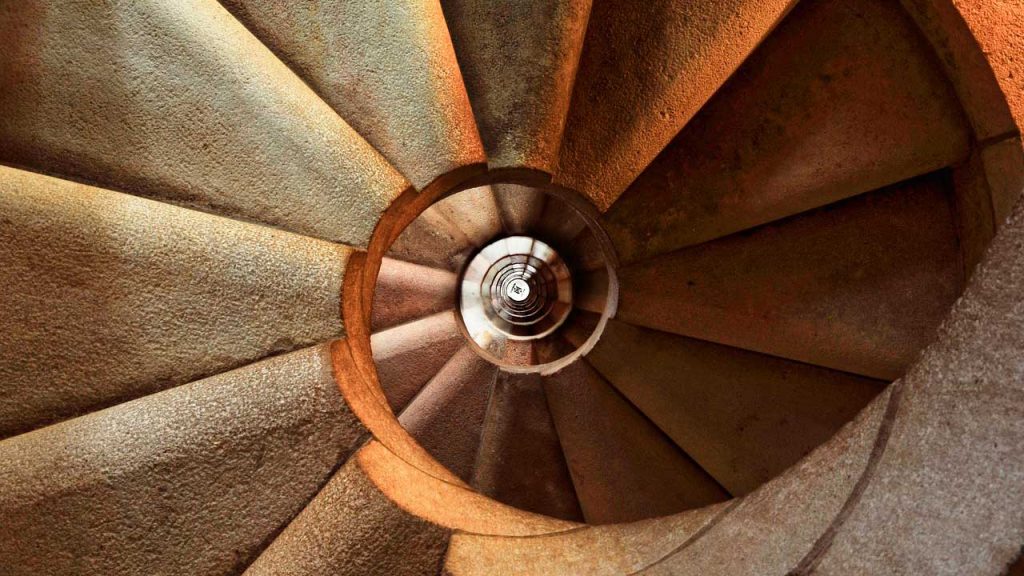

In rotational symmetry, an image or object can be rotated around a central point while maintaining its original appearance. This technique often results in mesmerizing patterns that radiate outward. Examples include the intricate designs found in mandalas and the mesmerizing spirals in seashells. Rotational symmetry adds a dynamic and rhythmic quality to artwork, evoking a sense of movement and energy.
3.3 Translational Symmetry


Translational symmetry involves repeating patterns in which an element is shifted or translated along a specific direction. This technique creates an illusion of endless continuation and repetition. Imagine rows of trees in a forest or a series of tiles forming a seamless pattern. Translational symmetry adds a sense of rhythm and order, capturing the viewer’s attention with its repetitive visual language.
3.4 Tessellation
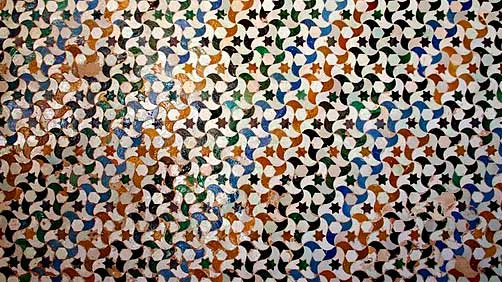

Tessellation is a technique that utilizes a combination of shapes to create a repeating pattern that completely covers a surface without gaps or overlaps. This technique, often seen in the works of Dutch artist M.C. Escher, showcases intricate and interlocking shapes that fit seamlessly together. Tessellation can range from simple geometric forms to complex, mind-bending designs, captivating viewers with its meticulous arrangement and optical illusions.
By employing these symmetry techniques, artists infuse their creations with balance, visual harmony, and aesthetic appeal. Whether it’s the reflective beauty of bilateral symmetry, the dynamic patterns of rotational symmetry, the rhythmic repetition of translational symmetry, or the intricate tessellations, symmetry techniques provide artists with powerful tools to engage and captivate their audience.
4. Symmetry Art in Different Art Forms
Symmetry art finds its place in various art forms, enriching the visual landscape and captivating viewers across different mediums. Let’s explore how symmetry is embraced in different art forms.
4.1 Symmetry in Painting
Painting, with its versatility and expressive potential, provides a vast canvas for symmetry art. Artists employ symmetry techniques to create balanced and harmonious compositions. From classical masterpieces to contemporary works, symmetry in painting can be seen in the arrangement of figures, objects, and landscapes. Think of Leonardo da Vinci’s “The Last Supper” with its central composition and mirroring figures, or the serene beauty of traditional Chinese landscape paintings that often feature reflective symmetry. Symmetry in painting adds a sense of order and aesthetic pleasure to the artwork.
4.2 Symmetry in Photography
Photography, a medium that captures moments frozen in time, also embraces the power of symmetry. Photographers utilize reflective symmetry to create visually stunning compositions. Whether it’s photographing a perfectly mirrored reflection in a body of water or capturing architectural marvels with symmetrical lines and patterns, symmetry in photography provides a sense of balance and visual satisfaction. It invites viewers to appreciate the precise alignment of elements and the harmony within the frame.
4.3 Symmetry in Architecture
Architecture, as a tangible expression of human creativity, often incorporates symmetry as a fundamental design principle. Symmetry in architecture can be observed in the grand facades of monumental buildings, such as palaces, temples, and cathedrals. From the perfectly mirrored structures of the Taj Mahal to the classical symmetry of ancient Greek temples, architectural symmetry creates a sense of grandeur and visual stability. It evokes a feeling of awe and harmony, as the balanced proportions guide the eye and create a sense of order within the built environment.
4.4 Symmetry in Textile Design
Textile design utilizes symmetry to create captivating patterns that adorn fabrics, rugs, and tapestries. From traditional patterns found in cultural textiles to contemporary designs, symmetry plays a crucial role in creating visually appealing and balanced compositions. Textile designers often employ reflective or translational symmetry to form intricate motifs that repeat in a harmonious arrangement. Symmetry in textile design not only enhances the aesthetic appeal of fabrics but also reflects cultural traditions and storytelling through patterns and motifs.
4.5 Symmetry in Digital Art
With the advent of digital technology, artists have embraced symmetry art in the realm of digital art. Digital artists can experiment with various symmetry techniques, leveraging the capabilities of software and tools to create mesmerizing and intricate designs. Whether it’s creating kaleidoscopic patterns, generative art, or exploring fractal symmetry, digital art offers a limitless playground for symmetrical experimentation. It allows artists to push the boundaries of creativity and produce visually stunning compositions that mesmerize viewers in the digital realm.
Incorporating symmetry in different art forms enriches the creative landscape, engaging viewers with the allure of balance and visual harmony. From paintings and photography to architecture, textile design, and digital art, the presence of symmetry art transcends mediums, captivating and inspiring audiences across the globe.
5. Creating Symmetry Art: Tools and Techniques
Creating symmetry art involves employing specific tools and techniques to achieve balanced and captivating compositions. Let’s explore the different methods artists use to bring symmetry to life.
5.1 Traditional Methods
Pencil and Paper:
One of the simplest and most accessible ways to create symmetry art is through traditional pencil and paper. Artists can sketch out their design, ensuring that it aligns with the desired symmetry technique. By using rulers, compasses, or other drawing aids, they can achieve precise symmetry in their artwork.
Grids and Guides:
Artists often employ grids or guidelines to maintain symmetry in their compositions. By dividing the canvas into equally spaced squares or using guide lines to mark the central axis, artists can ensure symmetrical placement of elements and maintain balance throughout the creation process.
5.2 Digital Tools
Graphic Design Software:
Digital tools and software have revolutionized the creation of symmetry art. Graphic design software, such as Adobe Photoshop and Illustrator, offer a wide range of tools and features that aid in achieving precise symmetry. Artists can utilize the transform, mirror, or duplicate functions to create perfectly mirrored or repeated patterns.
Symmetry Apps:
There are dedicated symmetry apps available for smartphones and tablets that enable artists to create symmetry art on the go. These apps provide intuitive interfaces with a variety of symmetry settings and drawing tools, allowing artists to explore different techniques and experiment with patterns and designs.
5.3 Exploring Symmetry Generators
Symmetry generators are specialized software or online tools that automate the process of creating complex symmetrical patterns. These generators allow artists to input their desired parameters, such as symmetry type, number of repetitions, and style preferences, and generate intricate symmetrical designs instantly. They provide a platform for artists to experiment with unique and complex symmetries that would be challenging to create manually.
By utilizing traditional methods, digital tools, and exploring symmetry generators, artists have a diverse range of resources at their disposal to create captivating and intricate symmetry art. Whether it’s the traditional charm of pencil and paper, the precision of digital design software, or the innovation of symmetry generators, these tools and techniques empower artists to bring their symmetrical visions to life.
6. The Impact of Symmetry Art
Symmetry art goes beyond its captivating visual allure and holds a profound impact on our perception and interpretation of artistic expressions. Let’s delve into the various dimensions of its impact.
6.1 Visual Appeal and Aesthetic Pleasure
Symmetry art’s visual appeal is undeniable. The harmonious balance and precise arrangement of elements in symmetrical compositions create a sense of order and visual satisfaction. Our brains are naturally drawn to symmetry, as it provides a sense of stability and coherence. When we encounter symmetrical artwork, we often experience a deep aesthetic pleasure and find ourselves captivated by the beauty of balanced forms and patterns.
6.2 Psychological Effects
Symmetry art has been found to have psychological effects on viewers. The balanced and harmonious compositions can evoke a sense of calmness, tranquility, and even a feeling of serenity. Symmetry provides a sense of predictability and familiarity, which can create a sense of comfort and ease. This psychological response to symmetry art highlights its potential to influence our emotional well-being and create a positive and soothing environment.
6.3 Symbolism and Meaning
Symmetry art carries symbolic significance and conveys meaning in various cultures and contexts. In many traditions, symmetrical patterns represent balance, harmony, and equilibrium. They symbolize unity and interconnectedness, reflecting the inherent order and balance found in nature. Moreover, symmetrical motifs often carry cultural or religious symbolism, embodying deeper concepts and narratives. From ancient mandalas representing spiritual journeys to intricate architectural designs denoting power and stability, symmetry art serves as a visual language for conveying symbolism and meaning.
By exploring symmetry art’s impact, we gain a deeper understanding of its universal appeal and significance. Its visual allure and aesthetic pleasure draw us in, while the psychological effects create a sense of tranquility and well-being. Additionally, the symbolism and meaning embedded within symmetrical compositions enrich our interpretation and allow for deeper connections with the artwork.
7. Artists Known for Symmetry Art
Symmetry art has captivated the imaginations of many artists throughout history. Let’s shine a spotlight on some of the influential artists renowned for their contributions to this captivating art form.


M.C. Escher
Maurits Cornelis Escher, commonly known as M.C. Escher, is hailed as one of the pioneers of symmetry art. His intricate and mind-bending tessellations and impossible constructions have left an indelible mark on the world of art. Escher’s work often played with optical illusions, exploring the concepts of symmetry, repetition, and perspective. His masterpieces, such as “Relativity” and “Drawing Hands,” showcase his incredible craftsmanship and his ability to challenge our perceptions of reality. Escher’s symmetrical creations continue to inspire artists and viewers alike, inviting us to question the boundaries of our visual understanding.
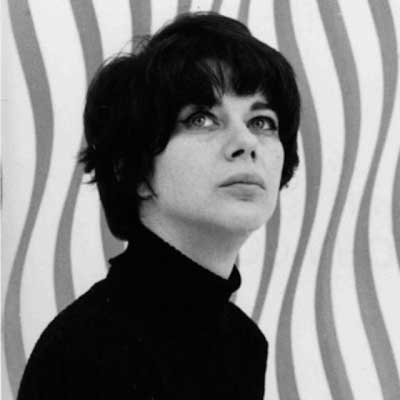

Bridget Riley
Bridget Riley, a renowned British artist, is celebrated for her exploration of optical art and geometric abstraction. Her works embrace the power of symmetry, utilizing precise and rhythmic arrangements of lines and shapes to create captivating visual effects. Riley’s paintings often feature vibrant colors and repetitive patterns that generate an optical vibrancy and movement. With her meticulous attention to detail and her mastery of symmetrical compositions, Riley’s artwork mesmerizes viewers, inviting us to engage with the interplay of form, color, and perception.


Leonardo da Vinci
Leonardo da Vinci, the epitome of the Renaissance polymath, ventured into the realm of symmetry art with his exceptional artistic abilities and scientific curiosity. Da Vinci’s exploration of symmetry can be seen in his iconic works, such as the “Vitruvian Man.” Through his keen observations of the human body and nature, da Vinci sought to depict the harmonious relationship between man and the universe. His pursuit of mathematical proportion and symmetry laid the foundation for his artistic compositions, creating a sense of balance and aesthetic beauty that continues to inspire generations of artists.
These artists, M.C. Escher, Bridget Riley, and Leonardo da Vinci, have left an indelible mark on the world of symmetry art. Through their mastery of symmetrical compositions, they have pushed the boundaries of perception, challenged our understanding of reality, and captivated audiences with their intricate and harmonious creations.
8. Raúl Lara Symmetrical Art
With neo-photorealism, Lara has reached a new level of realism, depth and texture that distinguishes his works. This innovative technique blends classical painting with the transfer of images captured through photography onto canvas. Through meticulous attention to detail and masterful brushwork, Lara brings her characters to life, infusing them with a profound sense of presence and emotion.
One of the distinctive aspects of Lara’s art is her masterful use of symmetry. With a keen eye for balance and composition, he employs symmetrical arrangements to create a harmonious visual experience. The figure, especially the female figure, occupies a central place in Lara’s works, radiating strength, beauty and vulnerability. The symmetrical nature of her art adds a captivating dynamism and accentuates the expressive qualities of each piece.
Below, we invite you to immerse yourself in the world of Raúl Lara’s symmetrical works. Witness the fusion of photography and painting, the intricate details and evocative power of neo-photorealism. Discover the depth of emotions and the captivating stories that unfold in each symmetrical composition.
Prepare to be captivated by a selection of Raúl Lara’s symmetrical works, each offering a unique insight into his artistic vision and the transformative nature of neo-photorealism.
8.1 Raúl Lara Symmetrical artworks
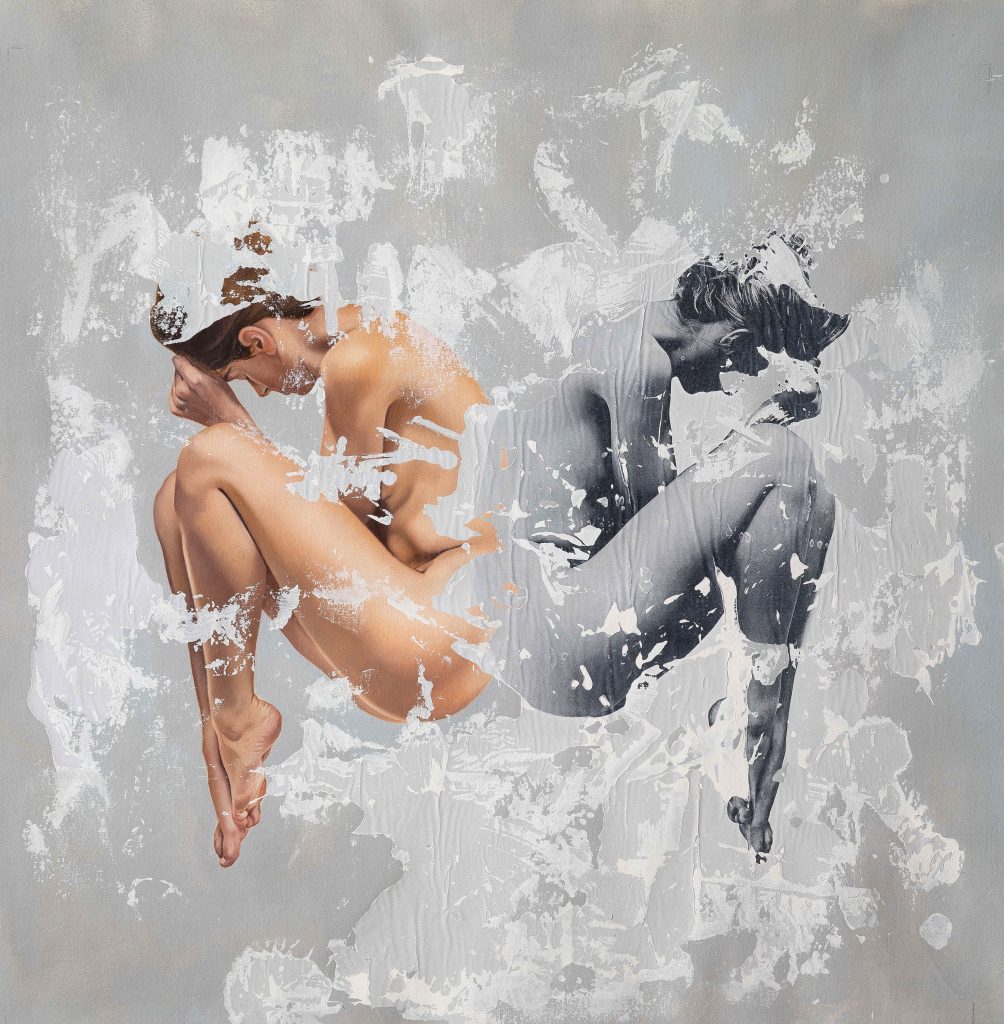

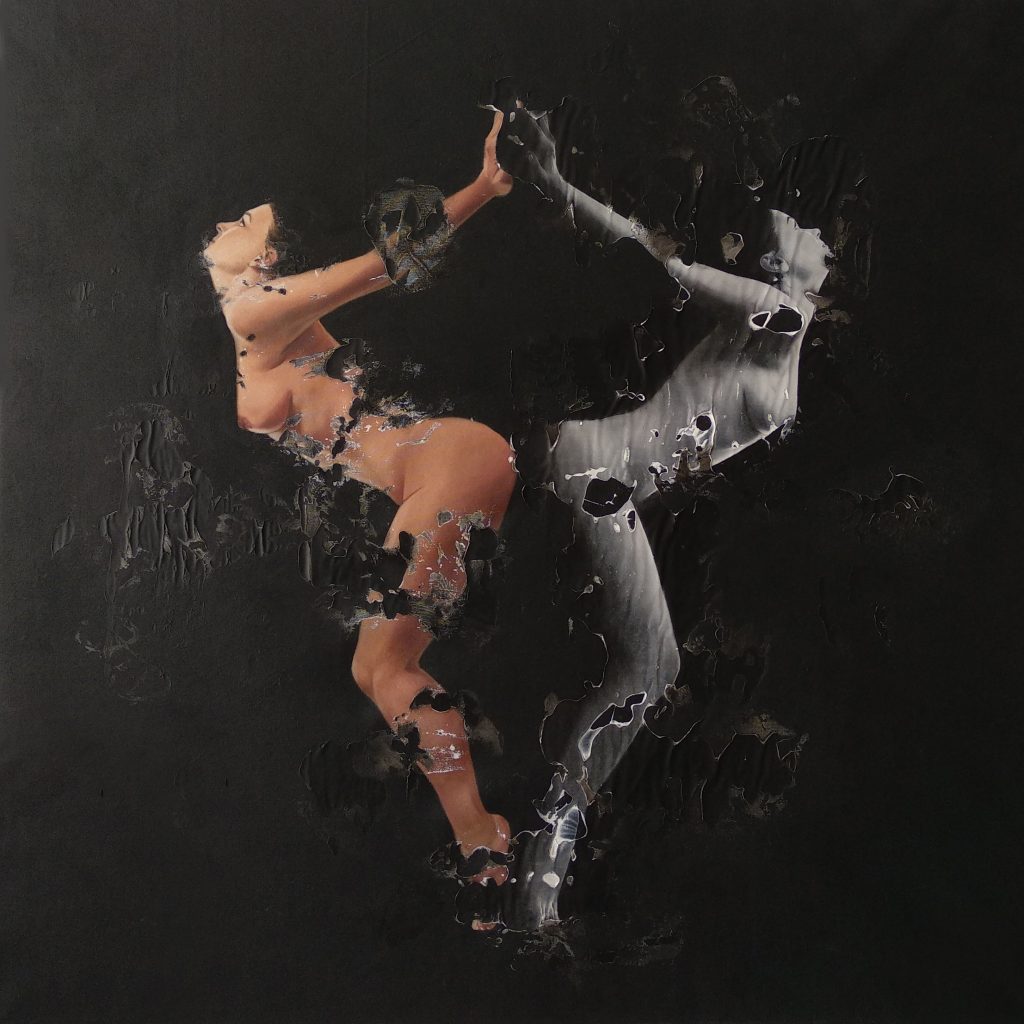

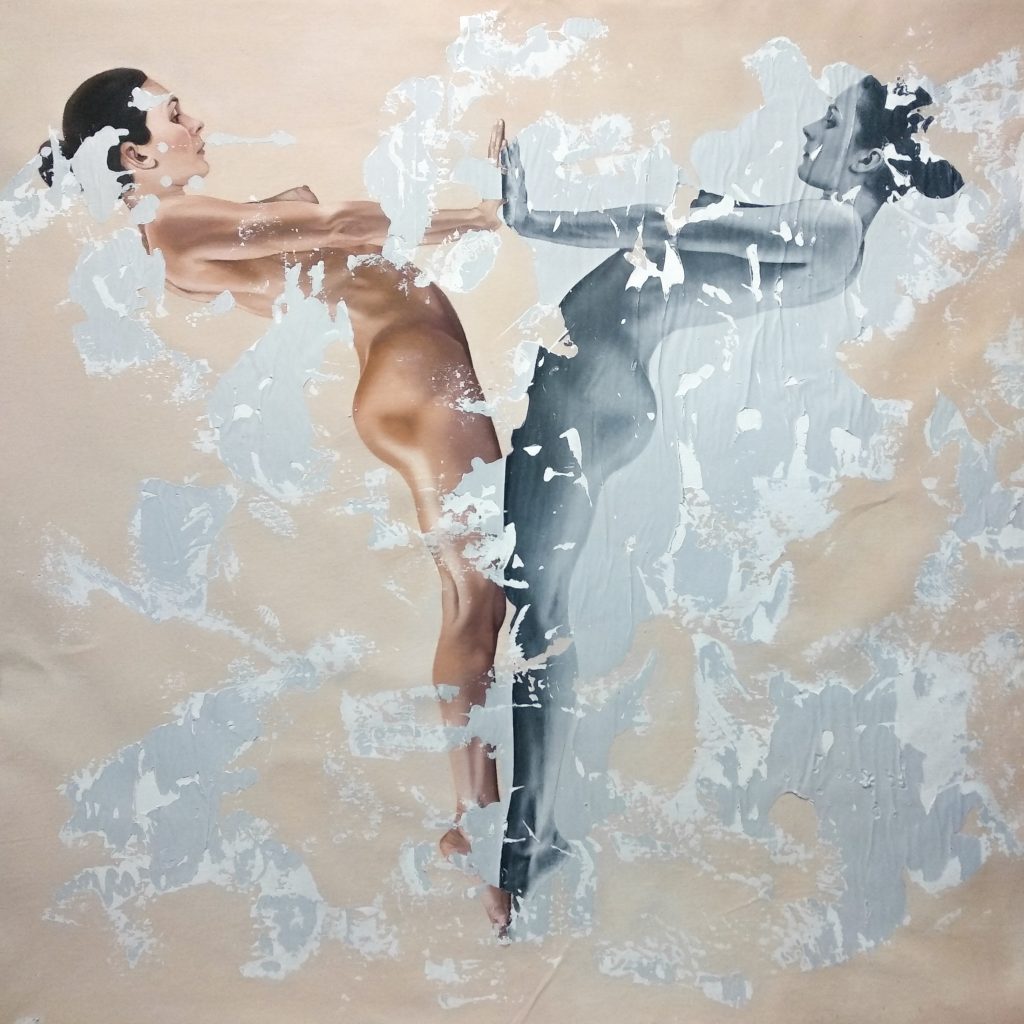

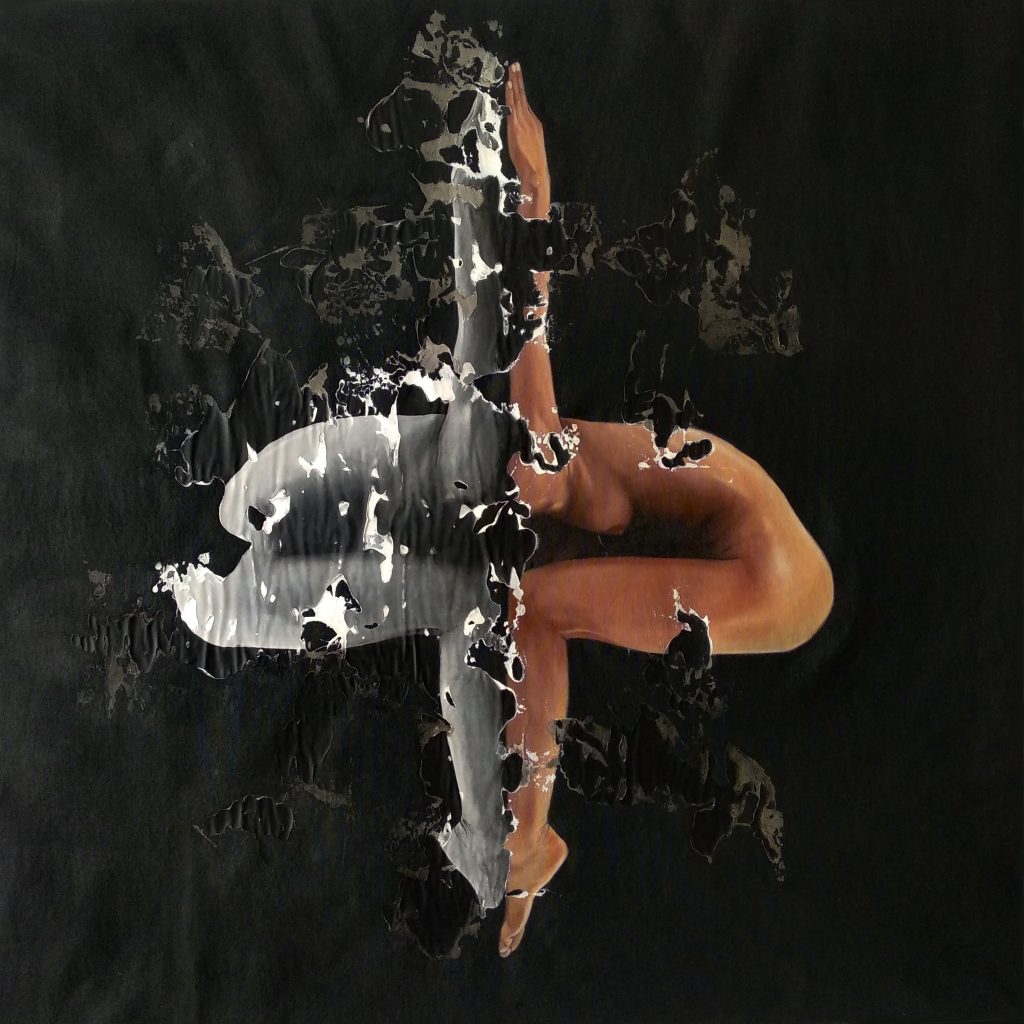

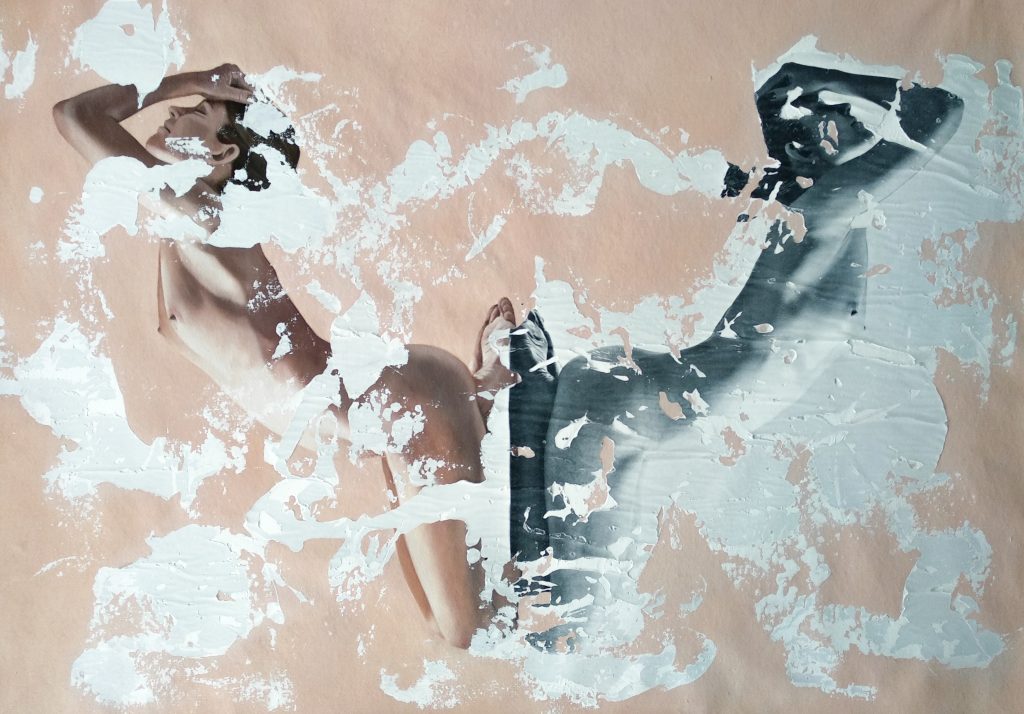

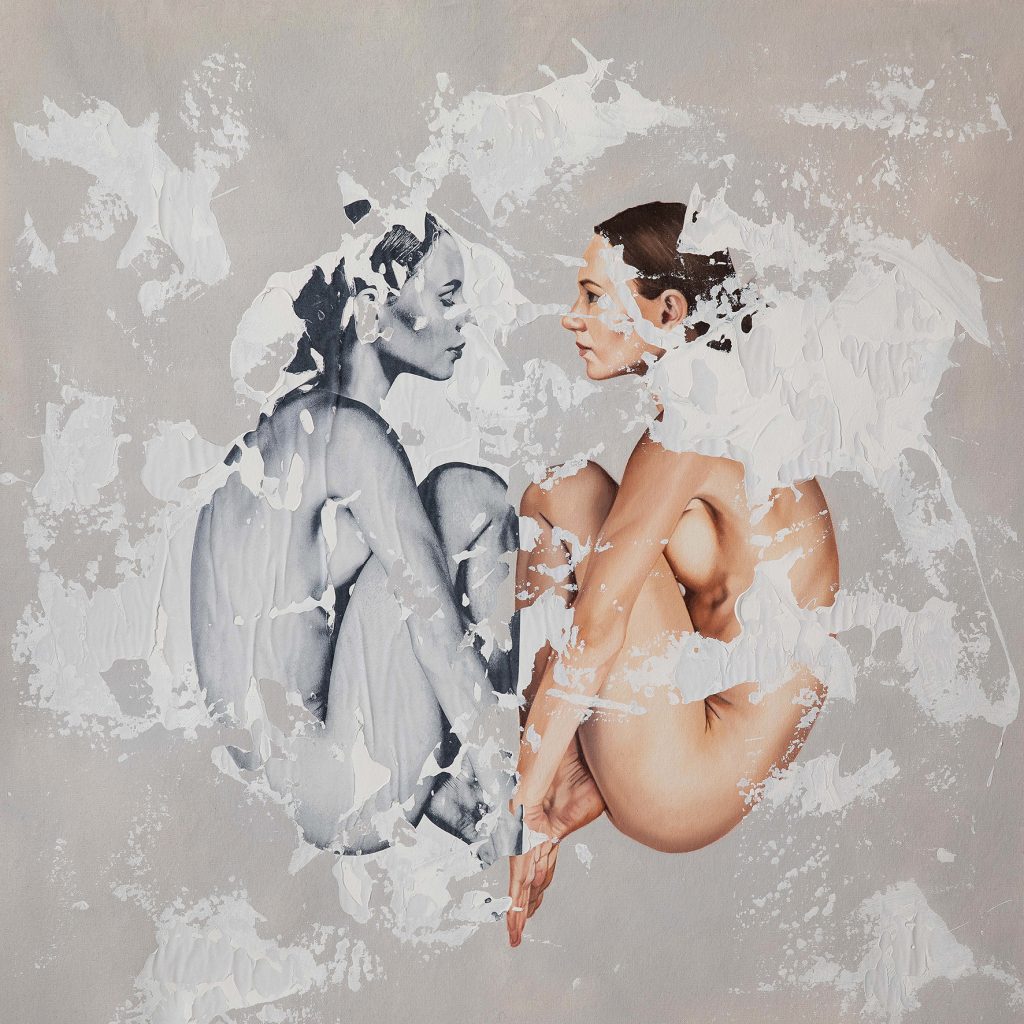

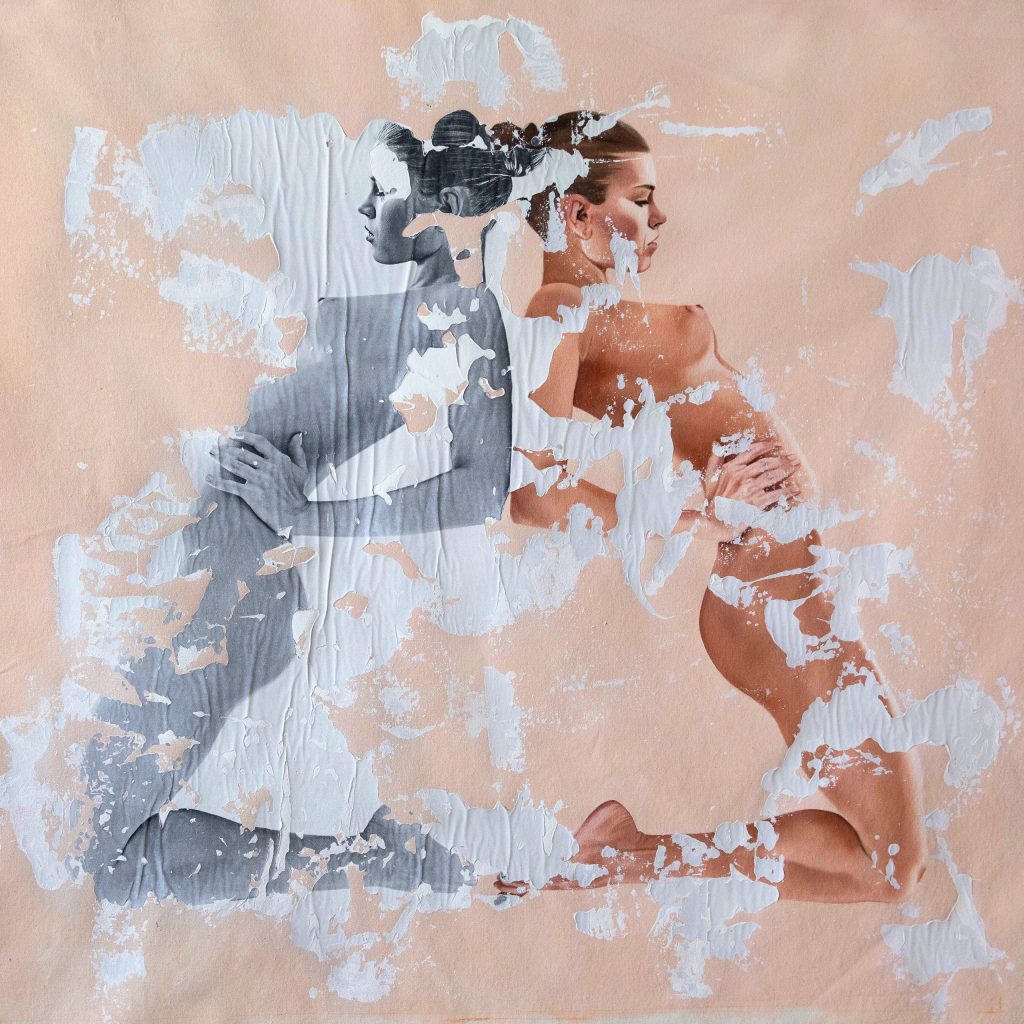

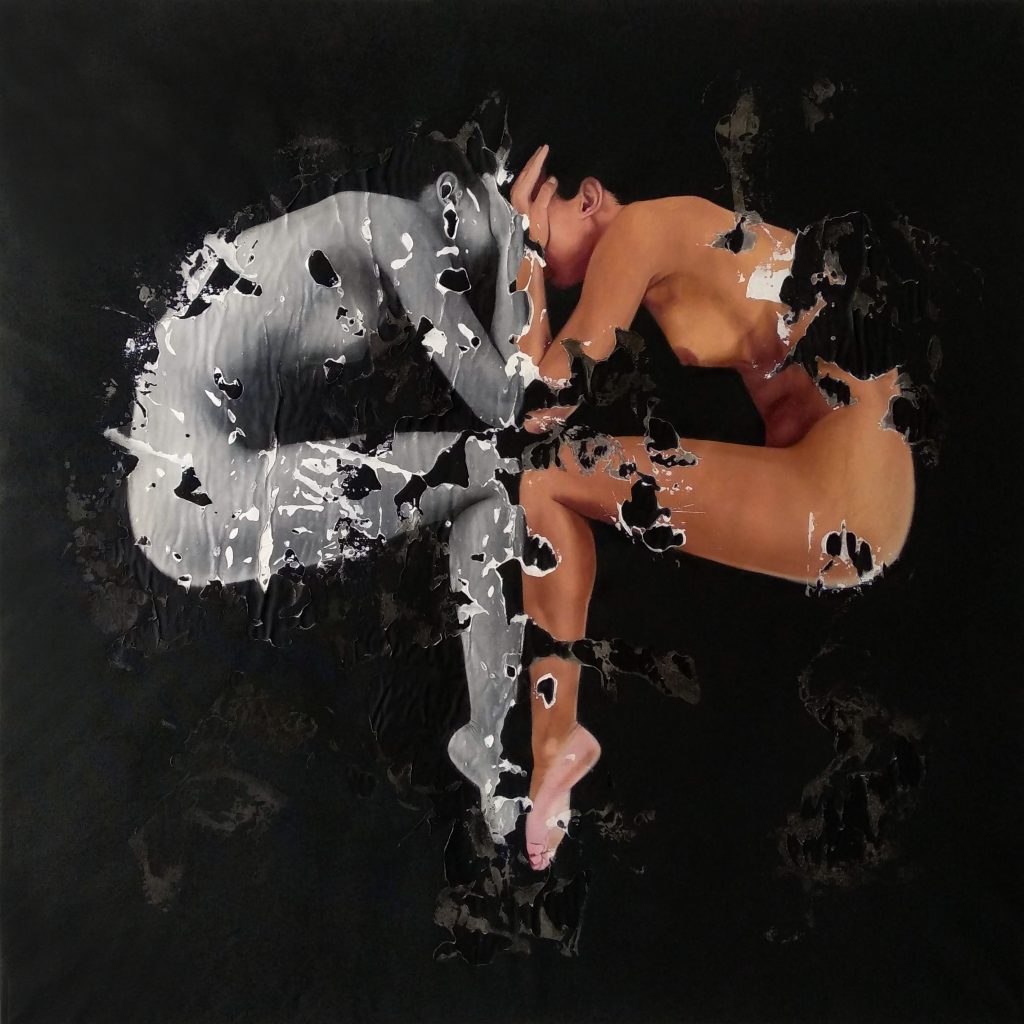



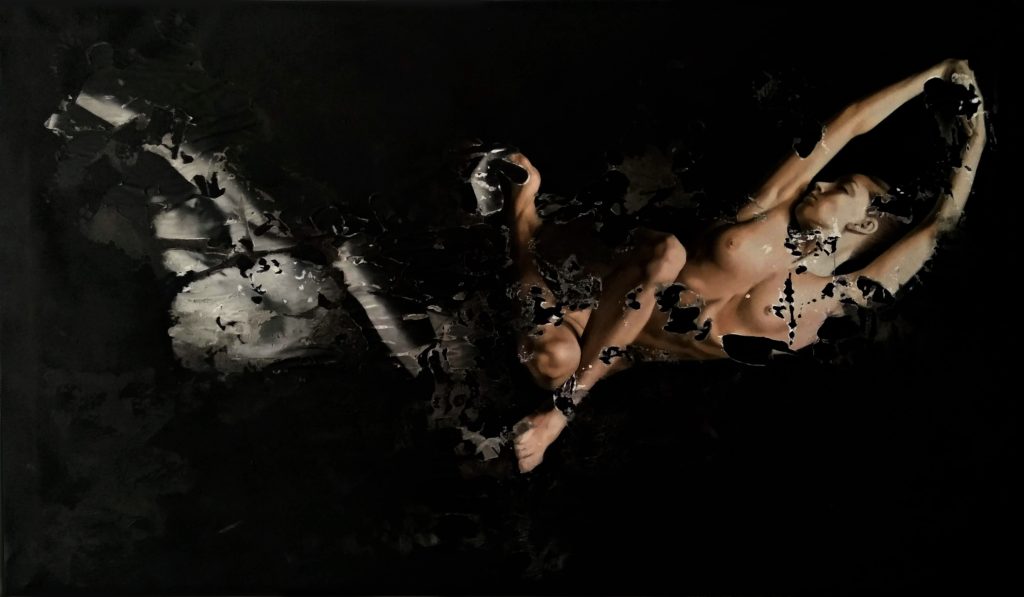

9. The Role of Symmetry Art in Contemporary Culture
Symmetry art continues to have a significant presence in contemporary culture, transcending traditional artistic domains and finding its place in various aspects of our modern world. Let’s explore the role of symmetry art in different realms of contemporary culture.
9.1 Symmetry in Advertising and Branding
Symmetry plays a crucial role in advertising and branding, where visual impact and memorability are key. Many brands incorporate symmetrical elements in their logos and visual identities to convey a sense of balance, professionalism, and trustworthiness. Symmetry in advertising compositions can create a visual harmony that captures the attention of viewers and communicates a clear message. From product packaging to billboards, the use of symmetry art in advertising and branding helps create a visually striking and memorable presence.
9.2 Symmetry in Fashion and Design
Symmetry art has a profound influence on the world of fashion and design. In fashion, designers often utilize symmetrical patterns, balanced cuts, and mirrored embellishments to create visually appealing garments. Symmetrical designs in fashion evoke a sense of elegance, sophistication, and order. In interior design and architecture, symmetrical arrangements and balanced layouts create a sense of harmony and equilibrium in living spaces. From furniture arrangements to room designs, symmetry art guides the creation of visually pleasing and functional environments.
9.3 Symmetry in Pop Culture
Symmetry art has made its mark in pop culture, where visual aesthetics and appeal are highly valued. From album covers to movie posters, symmetrical compositions are often used to create impactful and visually captivating designs. Pop music performances and choreography often incorporate symmetrical formations and movements, highlighting the sense of unity and precision. Symmetry art has become a popular visual language in the digital age, with symmetrical patterns and designs dominating social media feeds and digital art platforms.
By embracing symmetry art in advertising and branding, fashion and design, and pop culture, contemporary society continues to appreciate and celebrate the inherent allure of balanced compositions. The use of symmetry in these realms creates visual impact, aesthetic pleasure, and a sense of order that resonates with audiences in our modern world.
Conclusion
In a world that often seems chaotic, symmetry art provides a soothing balance—a visual refuge where order meets creativity. Through the exploration of different techniques, the study of its impact, and the recognition of influential artists, we have delved into the captivating realm of symmetry art. Whether you’re an artist, an art enthusiast, or simply someone who appreciates visual beauty, take a moment to embrace the allure of symmetry and incorporate it into your own creative journey.
FAQs
Q: Can anyone create symmetry art, or is it limited to skilled artists?
A: Creating symmetry art is not limited to skilled artists alone. Anyone can explore and create symmetrical compositions. While skilled artists may have honed their techniques and understanding of symmetry, beginners can also learn and develop their skills through practice and experimentation. With dedication and a willingness to learn, anyone can embark on their journey into the world of symmetry art.
Q: How can I start practicing symmetry art as a beginner?
A: As a beginner, start by studying the different types of symmetry like reflective symmetry, rotational symmetry, translational symmetry, and tessellation. Experiment with basic shapes and patterns, gradually adding complexity. Use traditional tools like pencils and paper or explore digital tools. Engage in guided exercises, join workshops, or explore online tutorials for techniques and inspiration. Practice regularly, embrace experimentation, and enjoy exploring the beauty of symmetry art at your own pace.
Q: How can I start practicing symmetry art as a beginner?
A: Start by studying different types of symmetry like reflective, rotational, translational, and tessellation. Experiment with basic shapes, gradually adding complexity. Use traditional or digital tools. Engage in guided exercises, workshops, or online tutorials. Practice regularly, embrace experimentation, and explore the beauty of symmetry art at your own pace.
Q: What are some examples of famous symmetrical artworks?
A: Some examples of famous symmetrical artworks include the Taj Mahal, the Parthenon, and the Palace of Versailles. These iconic structures are celebrated for their symmetrical designs and exquisite craftsmanship.


